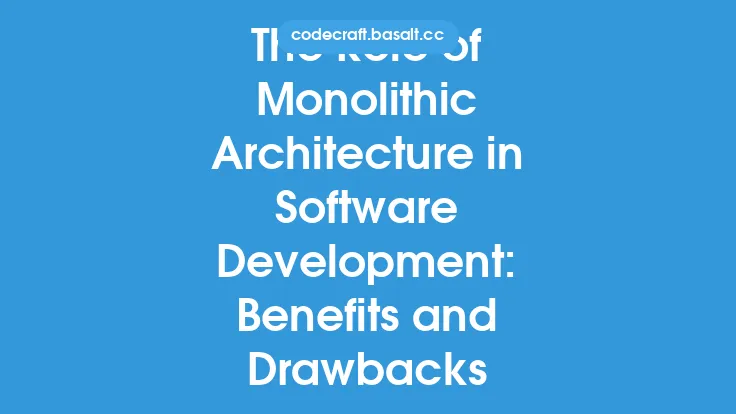In the realm of operating systems, process management is a critical component that enables the efficient execution of multiple processes or tasks concurrently. One fundamental concept in process management is context switching, which plays a vital role in ensuring that the operating system can switch between different processes seamlessly. Context switching is the process of switching the CPU's context from one process to another, which involves saving the current state of the executing process and loading the saved state of the next process to be executed.
Introduction to Context Switching
Context switching is a crucial aspect of process management, as it allows the operating system to allocate CPU time to different processes, thereby improving system responsiveness and throughput. When a context switch occurs, the operating system saves the current state of the executing process, including its registers, program counter, and memory pointers, and then loads the saved state of the next process to be executed. This process is also known as a process switch or a task switch. Context switching can occur due to various reasons, such as when a process completes its time slice, when a process is blocked or suspended, or when a higher-priority process becomes ready to execute.
Types of Context Switching
There are two primary types of context switching: voluntary and involuntary. Voluntary context switching occurs when a process voluntarily yields control to the operating system, typically when it has completed its execution or when it needs to wait for an event to occur. Involuntary context switching, on the other hand, occurs when the operating system forcibly switches the context from one process to another, typically due to a timer interrupt or when a higher-priority process becomes ready to execute. Involuntary context switching can be further divided into two sub-types: timer-based and interrupt-based. Timer-based context switching occurs when a timer interrupt occurs, indicating that the current process has exceeded its allocated time slice. Interrupt-based context switching occurs when an interrupt occurs, such as when a process requests I/O or when a hardware exception occurs.
Context Switching Overhead
Context switching incurs a significant overhead, as it involves saving and loading the process state, updating the process control block, and flushing the cache and translation lookaside buffer (TLB). The overhead of context switching can be substantial, especially in systems with a large number of processes or threads. The overhead of context switching can be attributed to several factors, including the time it takes to save and load the process state, the time it takes to update the process control block, and the time it takes to flush the cache and TLB. To minimize the overhead of context switching, operating systems employ various techniques, such as using a cache to store frequently accessed process state, using a TLB to reduce the number of page table lookups, and using a process control block to store process state.
Context Switching Techniques
Several techniques can be employed to reduce the overhead of context switching, including lazy context switching, eager context switching, and context switching using a separate stack. Lazy context switching involves delaying the saving of the process state until it is actually needed, whereas eager context switching involves saving the process state as soon as possible. Context switching using a separate stack involves using a separate stack to store the process state, which can reduce the overhead of context switching by minimizing the number of cache misses. Additionally, some operating systems employ techniques such as register windowing, which involves using a set of registers to store the process state, and context caching, which involves caching the process state to reduce the overhead of context switching.
Optimization Techniques
Several optimization techniques can be employed to minimize the overhead of context switching, including reducing the number of context switches, using a more efficient context switching algorithm, and using hardware support for context switching. Reducing the number of context switches can be achieved by using techniques such as process scheduling algorithms that minimize context switches, such as the shortest job first (SJF) algorithm or the priority scheduling algorithm. Using a more efficient context switching algorithm can involve using algorithms that minimize the overhead of context switching, such as the lazy context switching algorithm or the eager context switching algorithm. Hardware support for context switching can involve using specialized hardware, such as a context switch instruction or a process control block cache, to reduce the overhead of context switching.
Real-World Applications
Context switching has numerous real-world applications, including improving system responsiveness, increasing system throughput, and enhancing system reliability. Improving system responsiveness involves using context switching to allocate CPU time to different processes, thereby improving the responsiveness of the system. Increasing system throughput involves using context switching to execute multiple processes concurrently, thereby increasing the overall throughput of the system. Enhancing system reliability involves using context switching to detect and recover from errors, such as page faults or divide-by-zero errors, thereby improving the reliability of the system. Additionally, context switching is used in various real-world applications, such as web servers, database servers, and embedded systems, to improve system performance and responsiveness.
Conclusion
In conclusion, context switching is a critical component of process management that enables the efficient execution of multiple processes or tasks concurrently. Understanding the concepts of context switching, including the types of context switching, context switching overhead, and context switching techniques, is essential for designing and implementing efficient process management systems. By employing optimization techniques, such as reducing the number of context switches, using a more efficient context switching algorithm, and using hardware support for context switching, operating systems can minimize the overhead of context switching and improve system performance and responsiveness. As operating systems continue to evolve, the importance of context switching will only continue to grow, making it an essential concept for operating system designers and developers to understand and master.





